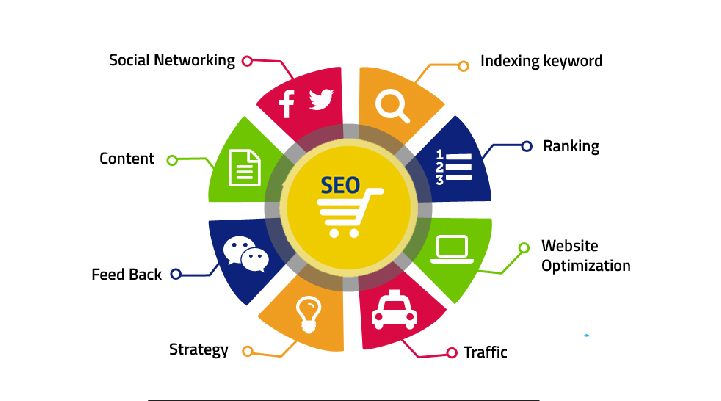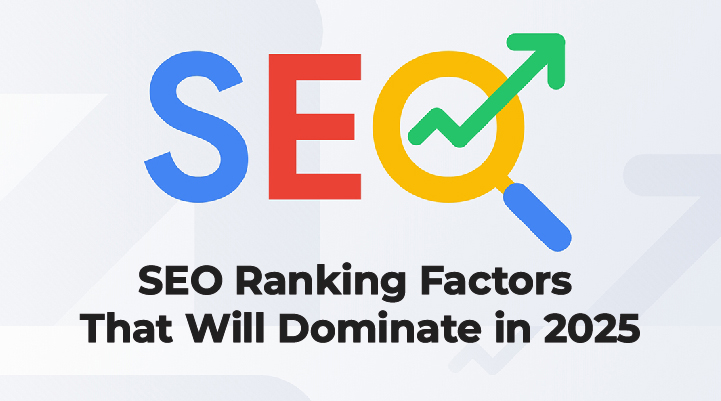SEO, or Search Engine Optimization, is the process of optimizing a website to improve its visibility and ranking on search engine results pages (SERPs) for relevant keywords. The goal of SEO is to attract organic (non-paid) traffic from search engines like Google, Bing, and Yahoo by making the website more appealing to both users and search engine algorithms.
Why Is SEO Important?
- Increased Visibility: Websites that rank higher on SERPs get more clicks and exposure.
- Cost-Effective Marketing: Organic traffic is free, making SEO a sustainable long-term strategy compared to paid ads.
- Credibility and Trust: Websites ranking high on SERPs are often perceived as more trustworthy by users.
- Targeted Traffic: SEO helps attract users actively searching for products, services, or information related to your business.
- Competitive Edge: Effective SEO can help businesses outperform competitors in search results.
How Does SEO Work?
Search engines use complex algorithms to determine which websites to display for a given search query. SEO involves optimizing your website to meet these algorithms’ criteria. The process can be broken down into three main steps:
- Crawling: Search engines use bots (called crawlers or spiders) to discover and scan websites.
- Indexing: The crawled pages are stored in a massive database (index) for retrieval when a user searches for relevant keywords.
- Ranking: Search engines rank indexed pages based on hundreds of factors to provide the most relevant and high-quality results to users.
Step 1: Define the Purpose and Audience
- Purpose: To provide a complete, in-depth understanding of SEO, covering its history, types, strategies, tools, and future trends.
- Audience: Beginners, business owners, marketers, and SEO professionals looking for a detailed reference guide.
Step 2: Create a Detailed Outline
A well-structured outline ensures the guide is organized and easy to follow. Here’s a suggested outline for a 10,000-word guide:
Table of Contents
- Introduction to SEO
- What is SEO?
- Why is SEO important?
- How search engines work (crawling, indexing, ranking)
- History of SEO
- Evolution of search engines
- Key milestones in SEO (e.g., Google algorithm updates like Panda, Penguin, Hummingbird)
- Types of SEO
- On-Page SEO
- Off-Page SEO
- Technical SEO
- Local SEO
- E-A-T (Expertise, Authority, Trustworthiness)
- How Search Engines Rank Websites
- Crawling and indexing
- Ranking factors (e.g., content quality, backlinks, user experience)
- The role of artificial intelligence (AI) in SEO (e.g., Google’s RankBrain)
- Keyword Research
- What is keyword research?
- Tools for keyword research (e.g., Google Keyword Planner, Ahrefs, SEMrush)
- Long-tail vs. short-tail keywords
- Understanding search intent
- On-Page SEO
- Title tags and meta descriptions
- Header tags (H1, H2, H3)
- URL structure
- Internal linking
- Image optimization (alt text, file names, compression)
- Content optimization (keyword placement, readability, LSI keywords)
- Off-Page SEO
- What are backlinks?
- How to build high-quality backlinks
- Social signals and their impact on SEO
- Online reputation management
- Technical SEO
- Site speed and performance optimization
- Mobile-friendliness and responsive design
- XML sitemaps and robots.txt
- Structured data and schema markup
- Fixing crawl errors and broken links
- Local SEO
- Importance of local SEO for businesses
- Google My Business optimization
- Local citations and reviews
- NAP consistency (Name, Address, Phone number)
- Content Marketing and SEO
- Role of content in SEO
- Types of SEO-friendly content (blogs, videos, infographics)
- Content calendars and planning
- Repurposing content for SEO
- SEO Tools and Software
- Overview of popular SEO tools (e.g., Ahrefs, SEMrush, Moz, Screaming Frog)
- How to use these tools effectively
- Free vs. paid tools
- Measuring SEO Success
- Key SEO metrics (e.g., organic traffic, bounce rate, keyword rankings)
- Tools for tracking performance (e.g., Google Analytics, Search Console)
- How to interpret data and adjust strategies
- Common SEO Mistakes to Avoid
- Keyword stuffing
- Ignoring mobile optimization
- Neglecting technical SEO
- Focusing only on backlinks
- Future Trends in SEO
- Voice search optimization
- AI and machine learning in SEO
- Core Web Vitals and user experience
- The rise of visual search
- Conclusion
- Recap of key takeaways
- The importance of staying updated with SEO trends
- Final tips for SEO success
Step 3: Write the Guide
Tips for Writing
- Use Simple Language: Ensure the guide is accessible to beginners while still providing value to advanced readers.
- Break Content into Sections: Use headings, subheadings, and bullet points to make the guide easy to scan.
- Include Examples: Use real-world examples to illustrate concepts (e.g., how a well-optimized title tag looks).
- Add Visuals: Include images, charts, and infographics to break up text and enhance understanding.
- Optimize for SEO:
- Use target keywords naturally throughout the guide.
- Include internal and external links to authoritative sources.
- Add meta descriptions and alt text for images.
Step 4: Expand Each Section
Here’s how to expand each section to reach 10,000 words:
1. Introduction to SEO (500 words)
- Define SEO and its purpose.
- Explain why SEO is important for businesses.
- Briefly describe how search engines work.
2. History of SEO (800 words)
- Discuss the evolution of search engines (e.g., Google, Bing).
- Highlight major algorithm updates and their impact on SEO.
3. Types of SEO (1,200 words)
- Provide detailed explanations of on-page, off-page, technical, and local SEO.
- Explain the concept of E-A-T and its role in SEO.
4. How Search Engines Rank Websites (1,000 words)
- Explain crawling, indexing, and ranking processes.
- Discuss key ranking factors and the role of AI.
5. Keyword Research (1,000 words)
- Define keyword research and its importance.
- Provide step-by-step instructions for conducting keyword research.
- Discuss tools and techniques for finding keywords.
6. On-Page SEO (1,500 words)
- Cover all aspects of on-page SEO in detail, including title tags, headers, URLs, and content optimization.
7. Off-Page SEO (1,000 words)
- Explain backlinks, social signals, and online reputation management.
8. Technical SEO (1,200 words)
- Dive deep into technical aspects like site speed, mobile-friendliness, and structured data.
9. Local SEO (800 words)
- Discuss strategies for optimizing local SEO, including Google My Business and local citations.
10. Content Marketing and SEO (800 words)
- Explain the relationship between content marketing and SEO.
- Provide tips for creating SEO-friendly content.
11. SEO Tools and Software (700 words)
- Review popular SEO tools and how to use them.
12. Measuring SEO Success (600 words)
- Discuss key metrics and tools for tracking SEO performance.
13. Common SEO Mistakes to Avoid (500 words)
- Highlight common pitfalls and how to avoid them.
14. Future Trends in SEO (500 words)
- Explore emerging trends like voice search and AI.
15. Conclusion (300 words)
- Summarize key points and provide final tips.
Step 5: Edit and Optimize
- Proofread: Check for grammar, spelling, and clarity.
- Optimize for SEO: Ensure proper keyword usage, meta tags, and internal linking.
- Add Visuals: Include relevant images, charts, and infographics.
- Format for Readability: Use short paragraphs, bullet points, and headings.
By following this structure and expanding each section, you can create a 10,000-word guide that is both informative and optimized for search engines. This guide will serve as a go-to resource for anyone looking to master SEO.


